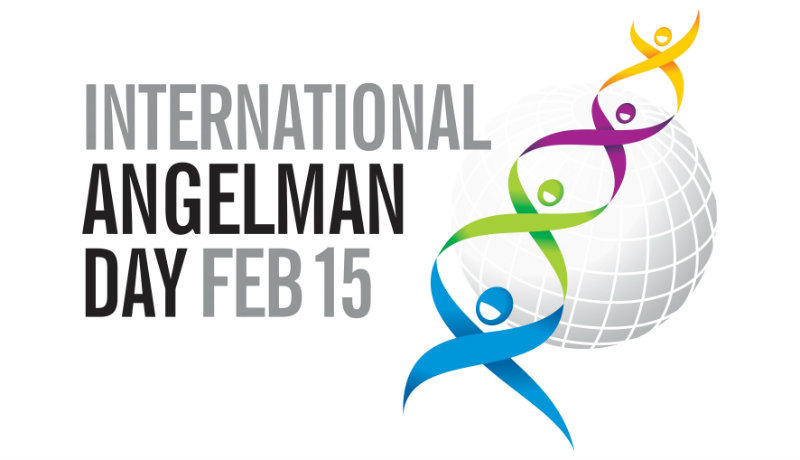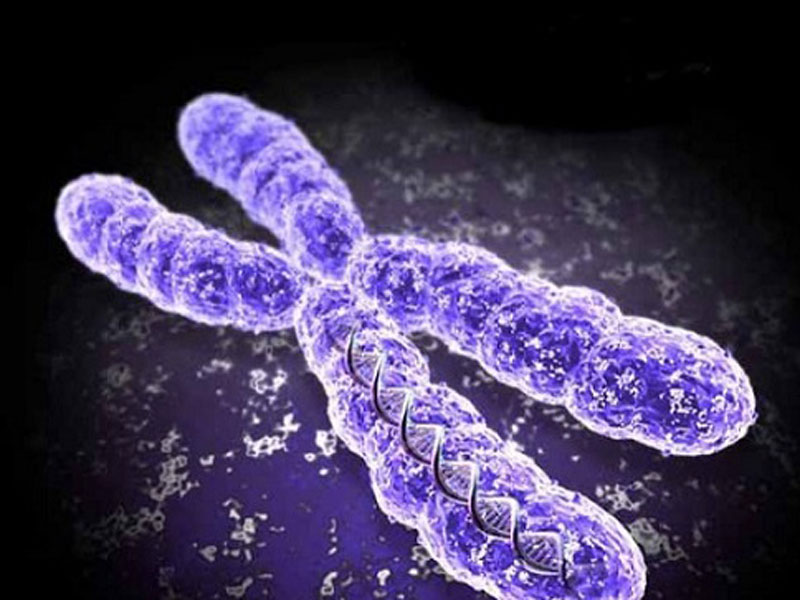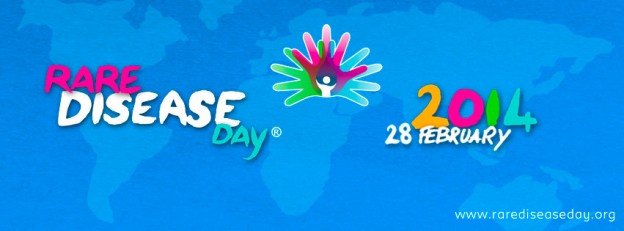
Resources 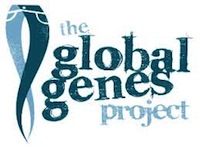 GlobalGenes.org provides a list of the many rare diseases around us. Take some time to learn about these issues. The first step to finding cures, providing innovative treatments, and helping the cause on any level is to become aware. Global Genes Rare List
GlobalGenes.org provides a list of the many rare diseases around us. Take some time to learn about these issues. The first step to finding cures, providing innovative treatments, and helping the cause on any level is to become aware. Global Genes Rare List
 Hutchinson-Gilford Progeria Syndrome (Progeria) is a rare, fatal genetic condition characterized by an appearance of accelerated aging in children. Although they are born looking healthy, children with Progeria begin to display many characteristics of accelerated aging at around 18-24 months of age. Progeria signs include growth failure, loss of body fat and hair, aged-looking skin, stiffness of joints, hip dislocation, generalized atherosclerosis, cardiovascular (heart) disease and stroke.
Hutchinson-Gilford Progeria Syndrome (Progeria) is a rare, fatal genetic condition characterized by an appearance of accelerated aging in children. Although they are born looking healthy, children with Progeria begin to display many characteristics of accelerated aging at around 18-24 months of age. Progeria signs include growth failure, loss of body fat and hair, aged-looking skin, stiffness of joints, hip dislocation, generalized atherosclerosis, cardiovascular (heart) disease and stroke.
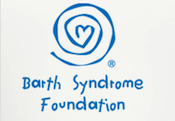 Barth syndrome (BTHS) is an X-linked genetic condition, usually transmitted from mother to son. Typical characteristics of Barth Syndrome include: cardiomyopathy (dilated or hypertrophic), neutropenia (chronic, cyclic, or intermittent), underdeveloped skeletal musculature and muscle weakness, growth delay, exercise intolerance, cardiolipin abnormalities, and 3-methylglutaconic aciduria.
Barth syndrome (BTHS) is an X-linked genetic condition, usually transmitted from mother to son. Typical characteristics of Barth Syndrome include: cardiomyopathy (dilated or hypertrophic), neutropenia (chronic, cyclic, or intermittent), underdeveloped skeletal musculature and muscle weakness, growth delay, exercise intolerance, cardiolipin abnormalities, and 3-methylglutaconic aciduria.
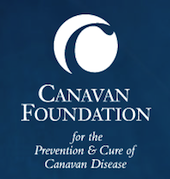 Canavan disease is a progressive, fatal neurological disorder that begins in infancy. It is caused by an inherited genetic abnormality: the lack of an essential enzyme causes deterioration of the white matter (myelin) in the brain, thereby preventing the proper transmission of nerve signals.
Symptoms: Increasing head circumference, lack of head control, reduced visual responsiveness and abnormal muscle tone such as stiffness or floppiness. Children with Canavan disease cannot crawl, walk, sit or talk. Over time they may suffer seizures, become paralyzed, developmentally delayed or blind and have trouble swallowing. Deafness may also result.
Canavan disease is a progressive, fatal neurological disorder that begins in infancy. It is caused by an inherited genetic abnormality: the lack of an essential enzyme causes deterioration of the white matter (myelin) in the brain, thereby preventing the proper transmission of nerve signals.
Symptoms: Increasing head circumference, lack of head control, reduced visual responsiveness and abnormal muscle tone such as stiffness or floppiness. Children with Canavan disease cannot crawl, walk, sit or talk. Over time they may suffer seizures, become paralyzed, developmentally delayed or blind and have trouble swallowing. Deafness may also result.
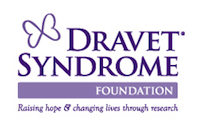 Dravet Syndrome is a rare and catastrophic form of intractable epilepsy that begins in infancy. Initial seizures are most often prolonged events and in the second year of life other seizure types begin to emerge. Individuals with Dravet syndrome face a higher incidence of SUDEP (sudden unexplained death in epilepsy)
Associated Conditions: Behavioral and developmental delays, movement and balance issues, orthopedic conditions, delayed language and speech issues, growth and nutrition issues, sleeping difficulties, chronic infections, sensory integration disorders, disruptions of the autonomic nervous system (which regulates things such as body temperature and sweating)
Dravet Syndrome is a rare and catastrophic form of intractable epilepsy that begins in infancy. Initial seizures are most often prolonged events and in the second year of life other seizure types begin to emerge. Individuals with Dravet syndrome face a higher incidence of SUDEP (sudden unexplained death in epilepsy)
Associated Conditions: Behavioral and developmental delays, movement and balance issues, orthopedic conditions, delayed language and speech issues, growth and nutrition issues, sleeping difficulties, chronic infections, sensory integration disorders, disruptions of the autonomic nervous system (which regulates things such as body temperature and sweating)
 Huntington's Disease is a devastating, hereditary, degenerative brain disorder for which there is, at present, no cure and only one FDA-approved treatment (Xenazine) for a symptom of HD. HD slowly diminishes the affected individual's ability to walk, talk and reason. Eventually, the person with HD becomes totally dependent upon others for his or her care. Huntington's Disease profoundly affects the lives of entire families -- emotionally, socially and economically.
Symptoms: Irritability, depression, anxiety, aggressive outbursts, mood swings, social withdrawal, fidgety behavior, involuntary movements (chorea, dystonia), difficulties with speech, swallowing, balance, walking, problems with short-term memory, organizing, coping, and concentrating.
Huntington's Disease is a devastating, hereditary, degenerative brain disorder for which there is, at present, no cure and only one FDA-approved treatment (Xenazine) for a symptom of HD. HD slowly diminishes the affected individual's ability to walk, talk and reason. Eventually, the person with HD becomes totally dependent upon others for his or her care. Huntington's Disease profoundly affects the lives of entire families -- emotionally, socially and economically.
Symptoms: Irritability, depression, anxiety, aggressive outbursts, mood swings, social withdrawal, fidgety behavior, involuntary movements (chorea, dystonia), difficulties with speech, swallowing, balance, walking, problems with short-term memory, organizing, coping, and concentrating.
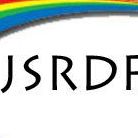 Joubert syndrome (JS) is a disorder defined by three primary findings:
Joubert syndrome (JS) is a disorder defined by three primary findings:
 Niemann-Pick Disease is one of a group of lysosomal storage diseases that affect metabolism and that are caused by genetic mutations. The severe form is fatal in toddlerhood; people with milder forms may live into their teens or young adulthood.
Symptoms: Abdominal enlargement; Enlarged spleen or liver; Jaundice following birth; Unusual shortness of breath; Repeated lung infections; Cherry red spot inside the eye; Vertical eye movement difficulties; Progressive loss of early motor skills; Feeding and swallowing difficulties; Learning problems; Sudden loss of muscle tone; Slurred speech; Seizures; Hypersensitivity to touch.
Niemann-Pick Disease is one of a group of lysosomal storage diseases that affect metabolism and that are caused by genetic mutations. The severe form is fatal in toddlerhood; people with milder forms may live into their teens or young adulthood.
Symptoms: Abdominal enlargement; Enlarged spleen or liver; Jaundice following birth; Unusual shortness of breath; Repeated lung infections; Cherry red spot inside the eye; Vertical eye movement difficulties; Progressive loss of early motor skills; Feeding and swallowing difficulties; Learning problems; Sudden loss of muscle tone; Slurred speech; Seizures; Hypersensitivity to touch.
 Ataxia-telangiectasia, or A-T, is a rare genetic disease that attacks children, causing progressive loss of muscle control, immune system problems, and a high rate of cancer. A-T affects a large variety of systems in the body, causing symptoms that affect health and daily living.
Symptoms: Ataxia (difficulty with control of movement) that is apparent early but worsens in school to pre-teen years, oculomotor apraxia (difficulty with coordination of head and eye movement when shifting gaze from one place to the next), involuntary movements, telangiectasia (dilated blood vessels) over the white of the eyes, making them appear bloodshot, problems with infections, especially of the ears, sinuses and lungs, increased incidence of cancer (primarily, but not exclusively, lymphomas and leukemias), delayed onset or incomplete pubertal development, and very early menopause, slowed rate of growth (weight and/or height), drooling particularly in young children when they are tired or concentrating on activities, slurred, slow, or distorted speech sounds, diabetes in adolescence or later, and premature changes in hair and skin
Ataxia-telangiectasia, or A-T, is a rare genetic disease that attacks children, causing progressive loss of muscle control, immune system problems, and a high rate of cancer. A-T affects a large variety of systems in the body, causing symptoms that affect health and daily living.
Symptoms: Ataxia (difficulty with control of movement) that is apparent early but worsens in school to pre-teen years, oculomotor apraxia (difficulty with coordination of head and eye movement when shifting gaze from one place to the next), involuntary movements, telangiectasia (dilated blood vessels) over the white of the eyes, making them appear bloodshot, problems with infections, especially of the ears, sinuses and lungs, increased incidence of cancer (primarily, but not exclusively, lymphomas and leukemias), delayed onset or incomplete pubertal development, and very early menopause, slowed rate of growth (weight and/or height), drooling particularly in young children when they are tired or concentrating on activities, slurred, slow, or distorted speech sounds, diabetes in adolescence or later, and premature changes in hair and skin
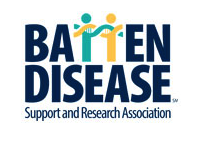 Batten disease, also known as Spielmeyer-Vogt-Sjogren-Batten disease, it is the most common form of a group of disorders called Neuronal Ceroid Lipofuscinoses (or NCL). There are four main types of NCL, including two forms that begin earlier in childhood and a very rare form that strikes adults. The symptoms are similar but the forms become apparent at different ages and progress at different rates.
Symptoms: Generally begin between ages 5 and 10 years, loss of vision or seizures, loss of muscle control (ataxia), moderate wasting of brain tissue (cerebral atrophy), progressive loss of sight, and dementia.
Batten disease, also known as Spielmeyer-Vogt-Sjogren-Batten disease, it is the most common form of a group of disorders called Neuronal Ceroid Lipofuscinoses (or NCL). There are four main types of NCL, including two forms that begin earlier in childhood and a very rare form that strikes adults. The symptoms are similar but the forms become apparent at different ages and progress at different rates.
Symptoms: Generally begin between ages 5 and 10 years, loss of vision or seizures, loss of muscle control (ataxia), moderate wasting of brain tissue (cerebral atrophy), progressive loss of sight, and dementia.
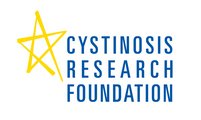 Cystinosis is a rare, incurable metabolic disease that afflicts 500 children and young adults in the United States and only 2000 worldwide. Cystinosis is a common cause of the Fanconi Syndrome, a renal tubular disease. By about one year of age, patients eliminate large volumes of urine and lose large amounts of salt and other minerals in their urine. Without specific treatment, these children progress to end-stage renal failure by an average age of nine years. In the past, this meant death. Today these patients can receive renal dialysis or transplantation, but even with successful transplantations, they develop abnormalities in other organs.
Symptoms: Excessive thirst and urination and failure to thrive, appear pale and thin and have short stature, rickets, severe sensitivity to light, increased level of cystine in their white blood cells, hypothyroidism, severe muscle weakness and central nervous system complications, and unusual defect in short-term visual memory.
Cystinosis is a rare, incurable metabolic disease that afflicts 500 children and young adults in the United States and only 2000 worldwide. Cystinosis is a common cause of the Fanconi Syndrome, a renal tubular disease. By about one year of age, patients eliminate large volumes of urine and lose large amounts of salt and other minerals in their urine. Without specific treatment, these children progress to end-stage renal failure by an average age of nine years. In the past, this meant death. Today these patients can receive renal dialysis or transplantation, but even with successful transplantations, they develop abnormalities in other organs.
Symptoms: Excessive thirst and urination and failure to thrive, appear pale and thin and have short stature, rickets, severe sensitivity to light, increased level of cystine in their white blood cells, hypothyroidism, severe muscle weakness and central nervous system complications, and unusual defect in short-term visual memory.
 Many of the Diseases on the Rare Disease Lists are categorized as mitochondrial disorders. The United Mitochondrial Disease Foundation aims to promote research and education for the diagnosis, treatment, and cure of mitochondrial disorders and to provide support to affected individuals and families. Members of the UMDF are able to network with other families and individuals to talk about mitochondrial disorders. The UMDF keeps members updated with the latest treatment advances and information through a quarterly newsletter. UMDF members are able to find support on the local and regional level through various chapters, groups and ambassadors.
Many of the Diseases on the Rare Disease Lists are categorized as mitochondrial disorders. The United Mitochondrial Disease Foundation aims to promote research and education for the diagnosis, treatment, and cure of mitochondrial disorders and to provide support to affected individuals and families. Members of the UMDF are able to network with other families and individuals to talk about mitochondrial disorders. The UMDF keeps members updated with the latest treatment advances and information through a quarterly newsletter. UMDF members are able to find support on the local and regional level through various chapters, groups and ambassadors.
 National Tay-Sachs & Allied Diseases Association (NTSAD) is one of the oldest patient advocacy groups in the country. The main focus of NTSAD includes funding research, supporting over 500 families and individuals worldwide, and raising awareness to prevent disease. NTSAD gives help and hope to thousands of individuals and families from many backgrounds and ethnicities who have been or are affected by Tay-Sachs, Canavan and dozens of related genetic diseases all over the world.
National Tay-Sachs & Allied Diseases Association (NTSAD) is one of the oldest patient advocacy groups in the country. The main focus of NTSAD includes funding research, supporting over 500 families and individuals worldwide, and raising awareness to prevent disease. NTSAD gives help and hope to thousands of individuals and families from many backgrounds and ethnicities who have been or are affected by Tay-Sachs, Canavan and dozens of related genetic diseases all over the world.
The Magic Foundation covers a wide range of diseases and provides ample support and professional help for them. Services offered include: emails, newsletters, scholarships, educational programs, medical programs, support, community forums and much more.
13 Chromosomal Disorders you may not have Heard of
You’ve heard of Downs syndrome and Fragile X syndrome, but what about Jacobsen syndrome? Or 22q11.2 deletion syndrome? In this post we bring attention to some lesser known chromosomal disorders.
Every Year on February 15 International Angelman Awareness Day is held. This day is dedicated to raising awareness for Angelman Syndrome. In order to do our part to help raise awareness, here are some great resources for Angelman Syndrome.
12 Resources for Moebius Awareness Day
January 24th is Moebius Syndrome Awareness Day, which is celebrated annually on the birthdate of Professor Paul Julius Moebius, the doctor who first diagnosed the condition in 1888. Here is a crash course of basic information on this rare neurological disease and some resources to provide ample information for anyone involved or interested in the Moebius Syndrome community.
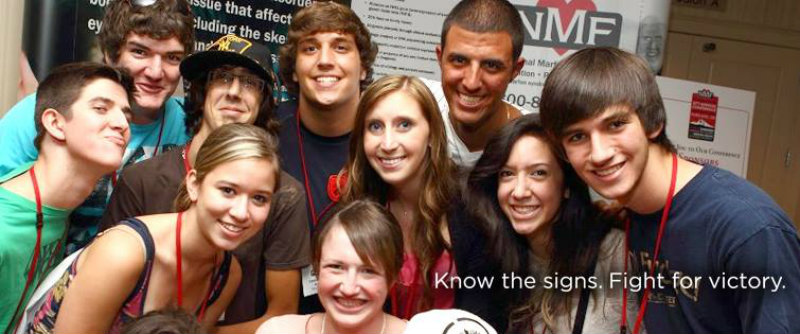 February is Marfan Awareness Month. As Marfan Syndrome is quite rare many people have not heard of this condition. Take some time this month to learn about Marfan, and find ways to help the cause. Here are 12 resources you should know about for Marfan Syndrome Awareness Month.
February is Marfan Awareness Month. As Marfan Syndrome is quite rare many people have not heard of this condition. Take some time this month to learn about Marfan, and find ways to help the cause. Here are 12 resources you should know about for Marfan Syndrome Awareness Month.
12 Important Resources for Families with Fragile X Syndrome
Being a parent to a child with a disability, any disability, is like day after day of guiding your family’s boat through a constant storm. For parents of a child with Fragile X Syndrome, a leading cause of autism and intellectual disabilities, the storm may seem to rage on and on.
To help you get though the tough times we have provided a list of 12 must have Fragile X resources.
What You Need To Know About Rare Disease Day
February 28 is Rare Disease Day, which is an annual, awareness-raising event co-ordinated by EURORDIS at the international level. In honor of Rare Disease Day here is what you need to know about rare diseases.What is Rare Disease Day?
The main objective of Rare Disease Day is to raise awareness amongst the general public and decision-makers about rare diseases and their impact on patients’ lives. The campaign targets primarily the general public but it is also designed for patients and patient representatives, as well as politicians, public authorities, policy-makers, industry representatives, researchers, health professionals and anyone who has a genuine interest in rare diseases.What Constitutes a Rare Disease?
In the U.S., a disease is considered rare if it is believed to affect fewer than 200,000 Americans. There are about 7,000 rare diseases, according to the National Institutes of Health (NIH).Rare Disease Facts and Stats
About 350 million people worldwide suffer from a rare disease- 30 million people in the United States are living with rare diseases. This equates to 1 in 10 Americans or 10% of the U.S. population
- Europe has approximately 30 million people living with rare diseases.
- 80% of rare diseases are genetic in origin.
- This means that these diseases are present throughout a person’s life, even if symptoms do not immediately appear.
- About 50% of those affected by rare diseases are children.
- About 30% of children with rare disease will not live to see their 5th birthday
- Rare diseases are responsible for 35% of deaths in the first year of life
- According to a study by Shire, on average, it takes 7.6 years in the US and 5.6 years in the UK for a patient with a rare disease to receive the proper diagnosis
What are These 7000 Rare Diseases?
 GlobalGenes.org provides a list of the many rare diseases around us. Take some time to learn about these issues. The first step to finding cures, providing innovative treatments, and helping the cause on any level is to become aware. Global Genes Rare List
GlobalGenes.org provides a list of the many rare diseases around us. Take some time to learn about these issues. The first step to finding cures, providing innovative treatments, and helping the cause on any level is to become aware. Global Genes Rare List
Highlighting a Few Rare Diseases
Of the thousands of rare diseases out there, each comes with their own symptoms, difficulties, and treatments. I decided to highlight 10 of these rare diseases. Each of these diseases are fortunate enough to have a group or foundation working towards a cure.1. Progeria
 Hutchinson-Gilford Progeria Syndrome (Progeria) is a rare, fatal genetic condition characterized by an appearance of accelerated aging in children. Although they are born looking healthy, children with Progeria begin to display many characteristics of accelerated aging at around 18-24 months of age. Progeria signs include growth failure, loss of body fat and hair, aged-looking skin, stiffness of joints, hip dislocation, generalized atherosclerosis, cardiovascular (heart) disease and stroke.
Hutchinson-Gilford Progeria Syndrome (Progeria) is a rare, fatal genetic condition characterized by an appearance of accelerated aging in children. Although they are born looking healthy, children with Progeria begin to display many characteristics of accelerated aging at around 18-24 months of age. Progeria signs include growth failure, loss of body fat and hair, aged-looking skin, stiffness of joints, hip dislocation, generalized atherosclerosis, cardiovascular (heart) disease and stroke.
2. Barth Syndrome
 Barth syndrome (BTHS) is an X-linked genetic condition, usually transmitted from mother to son. Typical characteristics of Barth Syndrome include: cardiomyopathy (dilated or hypertrophic), neutropenia (chronic, cyclic, or intermittent), underdeveloped skeletal musculature and muscle weakness, growth delay, exercise intolerance, cardiolipin abnormalities, and 3-methylglutaconic aciduria.
Barth syndrome (BTHS) is an X-linked genetic condition, usually transmitted from mother to son. Typical characteristics of Barth Syndrome include: cardiomyopathy (dilated or hypertrophic), neutropenia (chronic, cyclic, or intermittent), underdeveloped skeletal musculature and muscle weakness, growth delay, exercise intolerance, cardiolipin abnormalities, and 3-methylglutaconic aciduria.
3. Canavan
 Canavan disease is a progressive, fatal neurological disorder that begins in infancy. It is caused by an inherited genetic abnormality: the lack of an essential enzyme causes deterioration of the white matter (myelin) in the brain, thereby preventing the proper transmission of nerve signals.
Symptoms: Increasing head circumference, lack of head control, reduced visual responsiveness and abnormal muscle tone such as stiffness or floppiness. Children with Canavan disease cannot crawl, walk, sit or talk. Over time they may suffer seizures, become paralyzed, developmentally delayed or blind and have trouble swallowing. Deafness may also result.
Canavan disease is a progressive, fatal neurological disorder that begins in infancy. It is caused by an inherited genetic abnormality: the lack of an essential enzyme causes deterioration of the white matter (myelin) in the brain, thereby preventing the proper transmission of nerve signals.
Symptoms: Increasing head circumference, lack of head control, reduced visual responsiveness and abnormal muscle tone such as stiffness or floppiness. Children with Canavan disease cannot crawl, walk, sit or talk. Over time they may suffer seizures, become paralyzed, developmentally delayed or blind and have trouble swallowing. Deafness may also result.
4. Dravet Syndrome
 Dravet Syndrome is a rare and catastrophic form of intractable epilepsy that begins in infancy. Initial seizures are most often prolonged events and in the second year of life other seizure types begin to emerge. Individuals with Dravet syndrome face a higher incidence of SUDEP (sudden unexplained death in epilepsy)
Associated Conditions: Behavioral and developmental delays, movement and balance issues, orthopedic conditions, delayed language and speech issues, growth and nutrition issues, sleeping difficulties, chronic infections, sensory integration disorders, disruptions of the autonomic nervous system (which regulates things such as body temperature and sweating)
Dravet Syndrome is a rare and catastrophic form of intractable epilepsy that begins in infancy. Initial seizures are most often prolonged events and in the second year of life other seizure types begin to emerge. Individuals with Dravet syndrome face a higher incidence of SUDEP (sudden unexplained death in epilepsy)
Associated Conditions: Behavioral and developmental delays, movement and balance issues, orthopedic conditions, delayed language and speech issues, growth and nutrition issues, sleeping difficulties, chronic infections, sensory integration disorders, disruptions of the autonomic nervous system (which regulates things such as body temperature and sweating)
5. Huntington's Disease
 Huntington's Disease is a devastating, hereditary, degenerative brain disorder for which there is, at present, no cure and only one FDA-approved treatment (Xenazine) for a symptom of HD. HD slowly diminishes the affected individual's ability to walk, talk and reason. Eventually, the person with HD becomes totally dependent upon others for his or her care. Huntington's Disease profoundly affects the lives of entire families -- emotionally, socially and economically.
Symptoms: Irritability, depression, anxiety, aggressive outbursts, mood swings, social withdrawal, fidgety behavior, involuntary movements (chorea, dystonia), difficulties with speech, swallowing, balance, walking, problems with short-term memory, organizing, coping, and concentrating.
Huntington's Disease is a devastating, hereditary, degenerative brain disorder for which there is, at present, no cure and only one FDA-approved treatment (Xenazine) for a symptom of HD. HD slowly diminishes the affected individual's ability to walk, talk and reason. Eventually, the person with HD becomes totally dependent upon others for his or her care. Huntington's Disease profoundly affects the lives of entire families -- emotionally, socially and economically.
Symptoms: Irritability, depression, anxiety, aggressive outbursts, mood swings, social withdrawal, fidgety behavior, involuntary movements (chorea, dystonia), difficulties with speech, swallowing, balance, walking, problems with short-term memory, organizing, coping, and concentrating.
6. Joubert Syndrome
 Joubert syndrome (JS) is a disorder defined by three primary findings:
Joubert syndrome (JS) is a disorder defined by three primary findings:
- A specific abnormality in the part of the brain characterized by underdevelopment of the cerebellar vermis and additional brainstem differences giving the appearance of the molar tooth sign (MTS)
- Hypotonia (low muscle tone)
- Developmental delays/intellectual disabilities of varying degree
7. Niemann-Pick Disease
 Niemann-Pick Disease is one of a group of lysosomal storage diseases that affect metabolism and that are caused by genetic mutations. The severe form is fatal in toddlerhood; people with milder forms may live into their teens or young adulthood.
Symptoms: Abdominal enlargement; Enlarged spleen or liver; Jaundice following birth; Unusual shortness of breath; Repeated lung infections; Cherry red spot inside the eye; Vertical eye movement difficulties; Progressive loss of early motor skills; Feeding and swallowing difficulties; Learning problems; Sudden loss of muscle tone; Slurred speech; Seizures; Hypersensitivity to touch.
Niemann-Pick Disease is one of a group of lysosomal storage diseases that affect metabolism and that are caused by genetic mutations. The severe form is fatal in toddlerhood; people with milder forms may live into their teens or young adulthood.
Symptoms: Abdominal enlargement; Enlarged spleen or liver; Jaundice following birth; Unusual shortness of breath; Repeated lung infections; Cherry red spot inside the eye; Vertical eye movement difficulties; Progressive loss of early motor skills; Feeding and swallowing difficulties; Learning problems; Sudden loss of muscle tone; Slurred speech; Seizures; Hypersensitivity to touch.
8. Ataxia-telangiectasia
 Ataxia-telangiectasia, or A-T, is a rare genetic disease that attacks children, causing progressive loss of muscle control, immune system problems, and a high rate of cancer. A-T affects a large variety of systems in the body, causing symptoms that affect health and daily living.
Symptoms: Ataxia (difficulty with control of movement) that is apparent early but worsens in school to pre-teen years, oculomotor apraxia (difficulty with coordination of head and eye movement when shifting gaze from one place to the next), involuntary movements, telangiectasia (dilated blood vessels) over the white of the eyes, making them appear bloodshot, problems with infections, especially of the ears, sinuses and lungs, increased incidence of cancer (primarily, but not exclusively, lymphomas and leukemias), delayed onset or incomplete pubertal development, and very early menopause, slowed rate of growth (weight and/or height), drooling particularly in young children when they are tired or concentrating on activities, slurred, slow, or distorted speech sounds, diabetes in adolescence or later, and premature changes in hair and skin
Ataxia-telangiectasia, or A-T, is a rare genetic disease that attacks children, causing progressive loss of muscle control, immune system problems, and a high rate of cancer. A-T affects a large variety of systems in the body, causing symptoms that affect health and daily living.
Symptoms: Ataxia (difficulty with control of movement) that is apparent early but worsens in school to pre-teen years, oculomotor apraxia (difficulty with coordination of head and eye movement when shifting gaze from one place to the next), involuntary movements, telangiectasia (dilated blood vessels) over the white of the eyes, making them appear bloodshot, problems with infections, especially of the ears, sinuses and lungs, increased incidence of cancer (primarily, but not exclusively, lymphomas and leukemias), delayed onset or incomplete pubertal development, and very early menopause, slowed rate of growth (weight and/or height), drooling particularly in young children when they are tired or concentrating on activities, slurred, slow, or distorted speech sounds, diabetes in adolescence or later, and premature changes in hair and skin
9. Batten disease
 Batten disease, also known as Spielmeyer-Vogt-Sjogren-Batten disease, it is the most common form of a group of disorders called Neuronal Ceroid Lipofuscinoses (or NCL). There are four main types of NCL, including two forms that begin earlier in childhood and a very rare form that strikes adults. The symptoms are similar but the forms become apparent at different ages and progress at different rates.
Symptoms: Generally begin between ages 5 and 10 years, loss of vision or seizures, loss of muscle control (ataxia), moderate wasting of brain tissue (cerebral atrophy), progressive loss of sight, and dementia.
Batten disease, also known as Spielmeyer-Vogt-Sjogren-Batten disease, it is the most common form of a group of disorders called Neuronal Ceroid Lipofuscinoses (or NCL). There are four main types of NCL, including two forms that begin earlier in childhood and a very rare form that strikes adults. The symptoms are similar but the forms become apparent at different ages and progress at different rates.
Symptoms: Generally begin between ages 5 and 10 years, loss of vision or seizures, loss of muscle control (ataxia), moderate wasting of brain tissue (cerebral atrophy), progressive loss of sight, and dementia.
10. Cystinosis
 Cystinosis is a rare, incurable metabolic disease that afflicts 500 children and young adults in the United States and only 2000 worldwide. Cystinosis is a common cause of the Fanconi Syndrome, a renal tubular disease. By about one year of age, patients eliminate large volumes of urine and lose large amounts of salt and other minerals in their urine. Without specific treatment, these children progress to end-stage renal failure by an average age of nine years. In the past, this meant death. Today these patients can receive renal dialysis or transplantation, but even with successful transplantations, they develop abnormalities in other organs.
Symptoms: Excessive thirst and urination and failure to thrive, appear pale and thin and have short stature, rickets, severe sensitivity to light, increased level of cystine in their white blood cells, hypothyroidism, severe muscle weakness and central nervous system complications, and unusual defect in short-term visual memory.
Cystinosis is a rare, incurable metabolic disease that afflicts 500 children and young adults in the United States and only 2000 worldwide. Cystinosis is a common cause of the Fanconi Syndrome, a renal tubular disease. By about one year of age, patients eliminate large volumes of urine and lose large amounts of salt and other minerals in their urine. Without specific treatment, these children progress to end-stage renal failure by an average age of nine years. In the past, this meant death. Today these patients can receive renal dialysis or transplantation, but even with successful transplantations, they develop abnormalities in other organs.
Symptoms: Excessive thirst and urination and failure to thrive, appear pale and thin and have short stature, rickets, severe sensitivity to light, increased level of cystine in their white blood cells, hypothyroidism, severe muscle weakness and central nervous system complications, and unusual defect in short-term visual memory.
Other Organizations Making a Difference
Because there are so few people affected by one rare disease, it is beneficial to group the diseases in to categories and focus research and support on multiple diseases at one. These organizations have a focus that is broader than just one disease and in turn are able to provide help and understanding to many people affected by similar circumstances.United Mitochondrial Disease Foundation
 Many of the Diseases on the Rare Disease Lists are categorized as mitochondrial disorders. The United Mitochondrial Disease Foundation aims to promote research and education for the diagnosis, treatment, and cure of mitochondrial disorders and to provide support to affected individuals and families. Members of the UMDF are able to network with other families and individuals to talk about mitochondrial disorders. The UMDF keeps members updated with the latest treatment advances and information through a quarterly newsletter. UMDF members are able to find support on the local and regional level through various chapters, groups and ambassadors.
Many of the Diseases on the Rare Disease Lists are categorized as mitochondrial disorders. The United Mitochondrial Disease Foundation aims to promote research and education for the diagnosis, treatment, and cure of mitochondrial disorders and to provide support to affected individuals and families. Members of the UMDF are able to network with other families and individuals to talk about mitochondrial disorders. The UMDF keeps members updated with the latest treatment advances and information through a quarterly newsletter. UMDF members are able to find support on the local and regional level through various chapters, groups and ambassadors.
National Tay-Sachs and Allied Diseases
 National Tay-Sachs & Allied Diseases Association (NTSAD) is one of the oldest patient advocacy groups in the country. The main focus of NTSAD includes funding research, supporting over 500 families and individuals worldwide, and raising awareness to prevent disease. NTSAD gives help and hope to thousands of individuals and families from many backgrounds and ethnicities who have been or are affected by Tay-Sachs, Canavan and dozens of related genetic diseases all over the world.
National Tay-Sachs & Allied Diseases Association (NTSAD) is one of the oldest patient advocacy groups in the country. The main focus of NTSAD includes funding research, supporting over 500 families and individuals worldwide, and raising awareness to prevent disease. NTSAD gives help and hope to thousands of individuals and families from many backgrounds and ethnicities who have been or are affected by Tay-Sachs, Canavan and dozens of related genetic diseases all over the world.
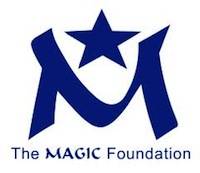 Magic Foundation
Magic Foundation
The Magic Foundation covers a wide range of diseases and provides ample support and professional help for them. Services offered include: emails, newsletters, scholarships, educational programs, medical programs, support, community forums and much more.
Past Friendship Circle Posts About Rare Diseases
13 Chromosomal Disorders you may not have Heard of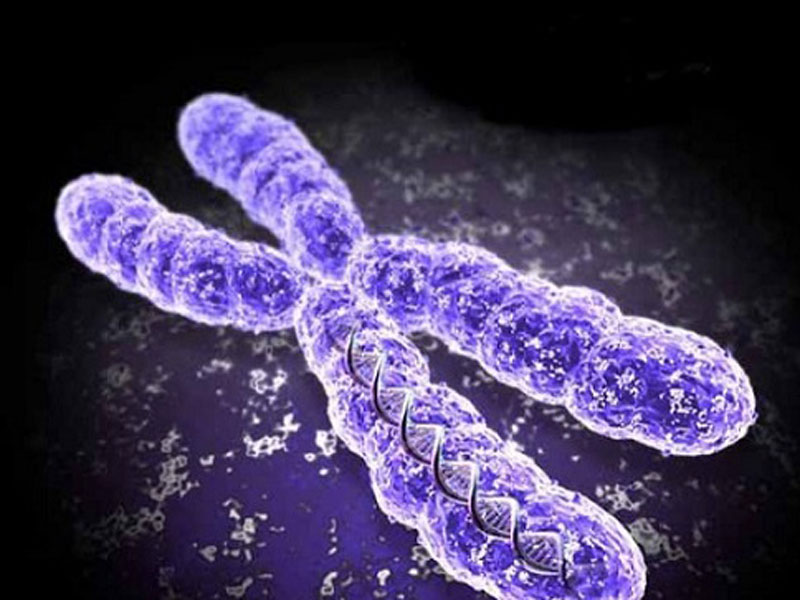
You’ve heard of Downs syndrome and Fragile X syndrome, but what about Jacobsen syndrome? Or 22q11.2 deletion syndrome? In this post we bring attention to some lesser known chromosomal disorders.
What you need to know about angelman syndrome
12 Resources for Moebius Awareness Day
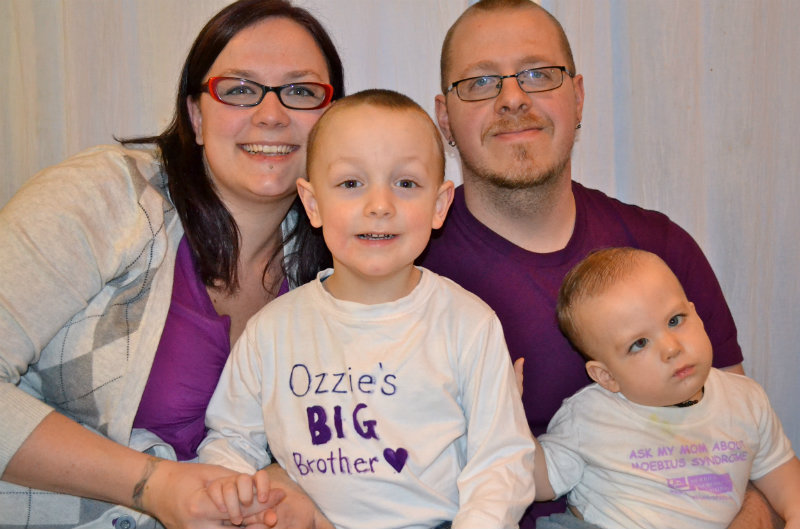
January 24th is Moebius Syndrome Awareness Day, which is celebrated annually on the birthdate of Professor Paul Julius Moebius, the doctor who first diagnosed the condition in 1888. Here is a crash course of basic information on this rare neurological disease and some resources to provide ample information for anyone involved or interested in the Moebius Syndrome community.
12 Resources for Marfan Syndrome Awareness Month
 February is Marfan Awareness Month. As Marfan Syndrome is quite rare many people have not heard of this condition. Take some time this month to learn about Marfan, and find ways to help the cause. Here are 12 resources you should know about for Marfan Syndrome Awareness Month.
February is Marfan Awareness Month. As Marfan Syndrome is quite rare many people have not heard of this condition. Take some time this month to learn about Marfan, and find ways to help the cause. Here are 12 resources you should know about for Marfan Syndrome Awareness Month.

